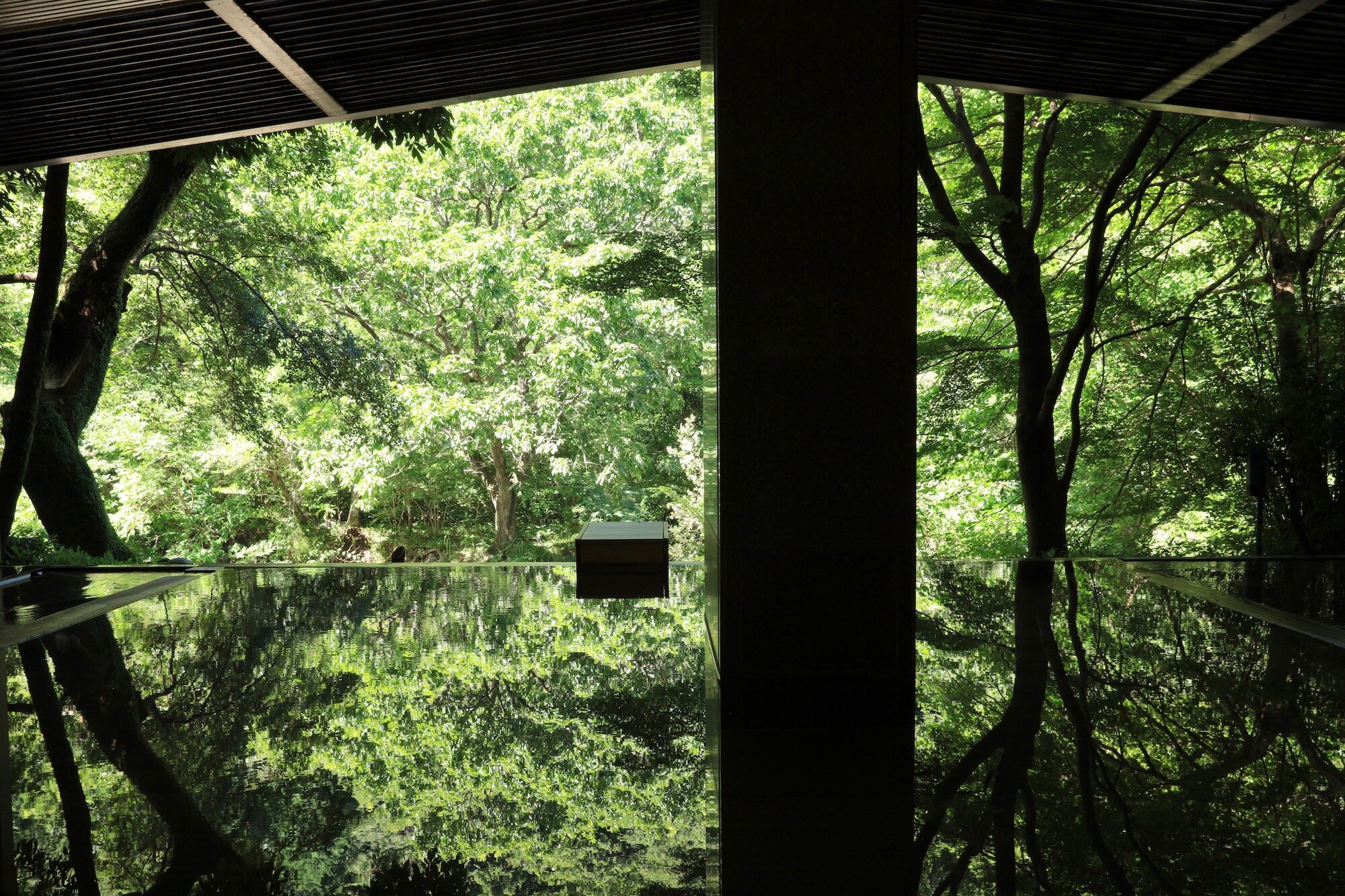Words by Liz Schaffer & Photographs by Angela Terrell - an extract from the Japan magazine.
Never underestimate the bliss of a bath - although be aware that not all soaks are created equal. Once the domain of the samurai, the onsens of Japan (fed by thermal springs whose waters contain at least one of 19 health-boosting elements, from iron to aluminium) are as transcendental as they get. An antidote for exhaustion and physical woes, an onsen will see your skin glow, your breath slow, and have you embracing the freedom of hadaka no tsukiai (naked communion); for nudity means nothing, not when everyone shares the same goal - to repose and restore somewhere divine.
With springs dotting the country and their sources staggeringly varied, savouring a single onsen in a single location will never be enough. So, I recommend doing as the locals do and embarking on a bathing pilgrimage, perhaps - as I did - travelling from KAI to KAI, charming boutique ryokans that celebrate art, heritage and healing waters.

Just south of Tokyo is Ito, a Pacific-hugged resort town with black sand beaches, a lengthy onsen history and curious manhole covers that depict the nearby Jogasaki Coast and Tarai-nori Kyoso, the annual Washtub Boat Race that sees competitors bob down the Matsukawa River in wooden laundry tubs. It is here that you’ll find KAI Anjin, named for the revered 17th century shipbuilder and navigator Miura Anjin - a.k.a. William Adams, the ‘Blue-Eyed Samurai’. The swanky interiors are the work of antique-besotted design firm Super Potato, and the space is both courtly and gallery-esque. Nautical paraphernalia abounds, hues mirror the sea and sky, and it’s impossible to tell sculpture from structure - most notably in the restaurant which is divided into private booths by screens crafted from glass, books and cloth.


Kaiseki meals here are particularly delightful, the presentation so exquisite that you pause before indulging, relishing the tableware as much as the flavour. You’ll encounter sake glasses graced with stars, sashimi served upon ceramic leaves, shimming lacquerware, whelks seared in sugar and soy sauce, sprinklings of matcha salt, custard-like tofu and ‘assorted delicacies’ that appear on boat-shaped stands, inspired by the tiers of England’s afternoon teas.
After such a feast - sated and besotted - I retreated to the rooftop onsen where the ocean, visible from every bedroom, had disappeared into the darkness. I would return early the next morning, rising with the sun, to bathe beneath the softest of blues. But for now my focus was on the warmth, my breath and treasuring the moment.

Hakone is only an hour away but could be another world entirely; an art-centric region adored for its hydrangeas, parquetry, the Hakone Open-Air Museum and a heart-in-your-mouth ropeway that spans the volcanic Ōwakudani - ‘Great Boiling Valley’. It is also home to KAI Hakone, a decorous, bamboo-framed, white-brick oasis overlooking Mount Yusaka and the babbling Sukumo River.
Hakone was one of the 53 post towns found along the Takaido Road - a historic trade route that linked Tokyo and Kyoto - and KAI Hakone’s breakfasts include piquant nods to the fare of those early travellers, staples being mushroom miso, mochi and amazake - nutrient-rich super foods. However, this is a hideaway that fuses tradition with character and their contemporary flair shines through in their seasonal shaved ice; electric-blue, hydrangea-inspired treats topped with crystal-like purple jelly.


Yet the onsen remains the star - as an onsen always should. While the high ceilings, stonework and wooden details are marvellous, it is the absent fourth wall that bewitches, the 40 degree water mirroring the foliage, a towering verdant backdrop. Given nature’s dominance, this is a bath that changes with the seasons, and while I visited during taisho, the height of summer, I long to return in seimei, a time of springtime vibrancy, hakuro, when autumn dew gathers, and shosetsu, when the first snow falls. Passing a year in and out of KAI’s luxurious waters is certainly something to consider.







